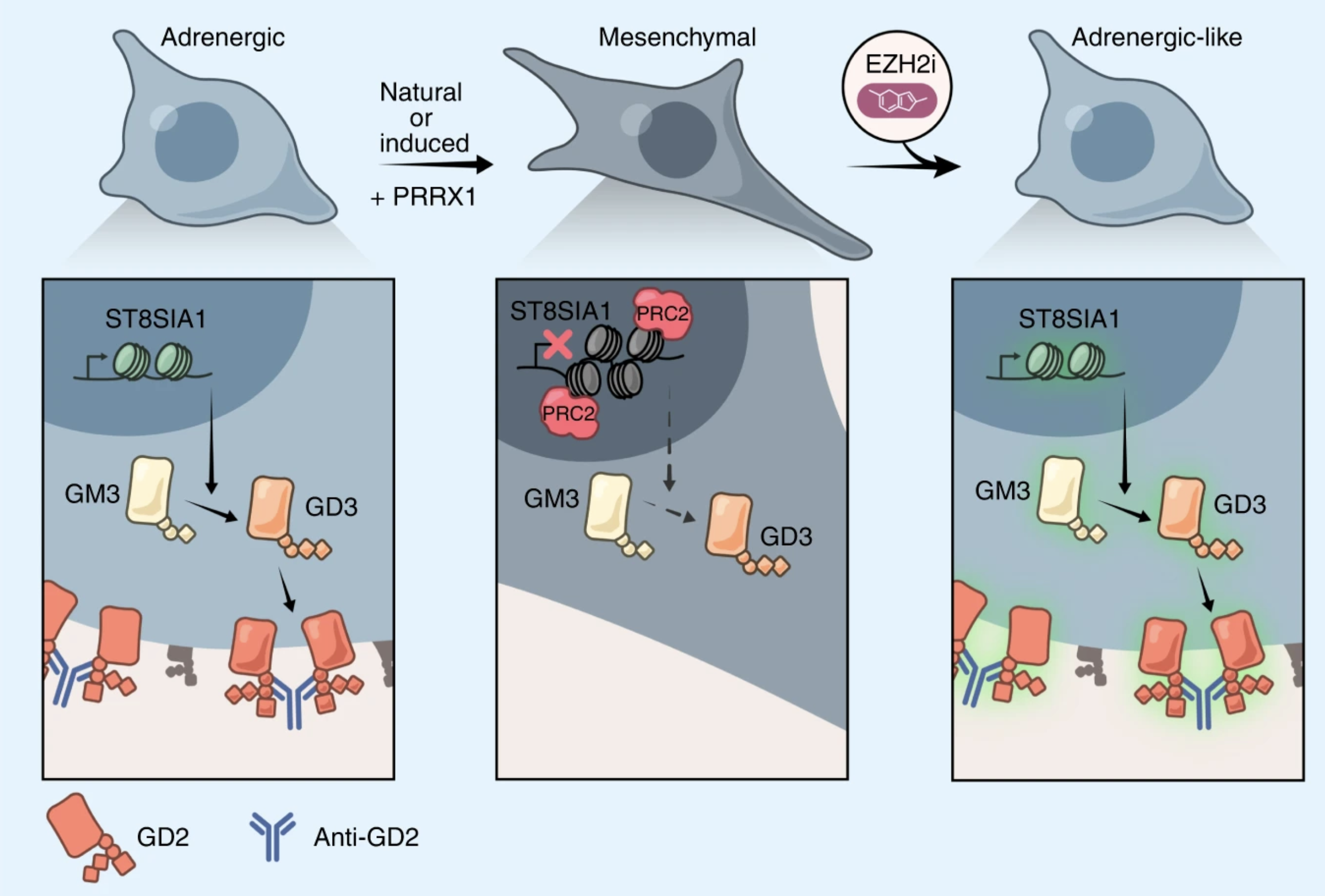
Nathaniel W. Mabe, Min Huang, Guillermo N. Dalton, Gabriela Alexe, Daniel A. Schaefer, Anna C. Geraghty, Amanda L. Robichaud, Amy S. Conway, Delan Khalid, Marius M. Mader, Julia A. Belk, Kenneth N. Ross, Michal Sheffer, Miles H. Linde, Nghi Ly, Winnie Yao, Maria Caterina Rotiroti, Benjamin A. H. Smith, Marius Wernig, Carolyn R. Bertozzi, Michelle Monje, Constantine S. Mitsiades, Ravindra Majeti, Ansuman T. Satpathy, Kimberly Stegmaier & Robbie G. Majzner
Nature Cancer, 11 July 2022
Immunotherapy with anti-GD2 antibodies has advanced the treatment of children with high-risk neuroblastoma, but nearly half of patients relapse, and little is known about mechanisms of resistance to anti-GD2 therapy. Here, we show that reduced GD2 expression was significantly correlated with the mesenchymal cell state in neuroblastoma and that a forced adrenergic-to-mesenchymal transition (AMT) conferred downregulation of GD2 and resistance to anti-GD2 antibody. Mechanistically, low-GD2-expressing cell lines demonstrated significantly reduced expression of the ganglioside synthesis enzyme ST8SIA1 (GD3 synthase), resulting in a bottlenecking of GD2 synthesis. Pharmacologic inhibition of EZH2 resulted in epigenetic rewiring of mesenchymal neuroblastoma cells and re-expression of ST8SIA1, restoring surface expression of GD2 and sensitivity to anti-GD2 antibody. These data identify developmental lineage as a key determinant of sensitivity to anti-GD2 based immunotherapies and credential EZH2 inhibitors for clinical testing in combination with anti-GD2 antibody to enhance outcomes for children with neuroblastoma.